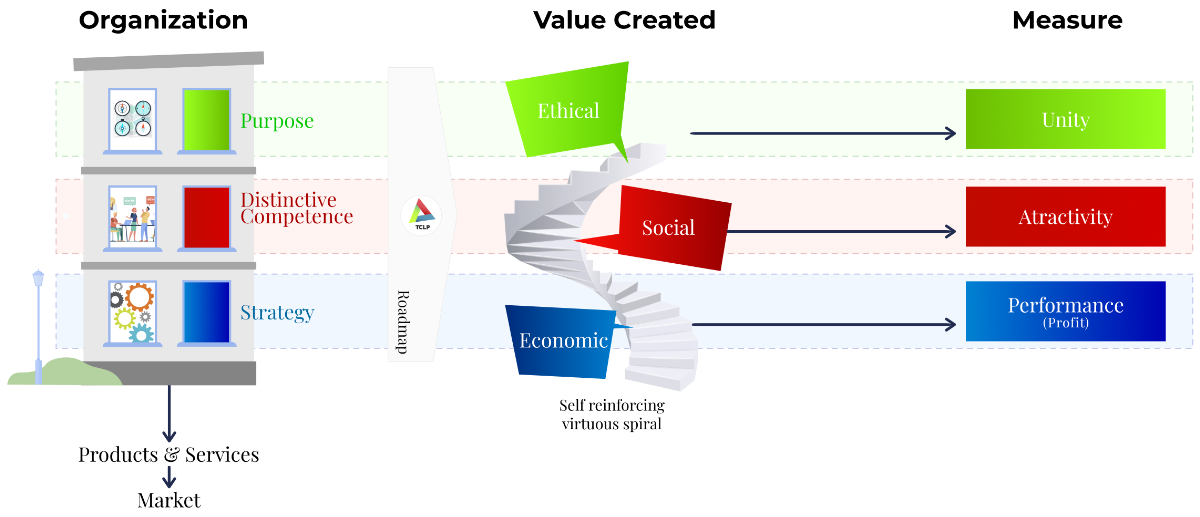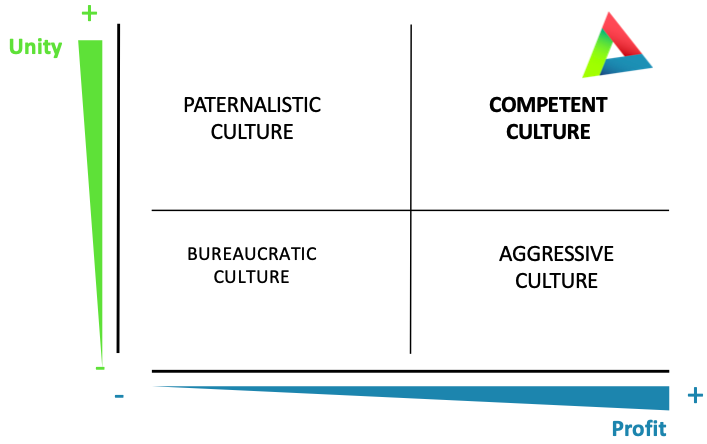Why are we here?
To guide your organization to Passionately Perform its PurposePowerful Roadmap
TCLP has developed a powerful roadmap to unleash the potential motivation at all levels of the organization by dovetailing strategy, talent and purpose in a mutually reinforcing virtuous spiral.
The results are :
sustainable profits
a competent culture which enhances agility, learning and innovation
positive impact by seamless incorporation of ESG initiatives within the company strategy
We are here to guide your organization to Passionately Perform its Purpose
Our Roadmap
TCLP has nailed a powerful roadmap to unleash the potential motivation at all levels of the organization by dovetailing strategy, distinctive competence and purpose in a mutually reinforcing virtuous spiral.

Different focus
leads to different culture

Paternalistic culture
Managers make decisions that generate high levels of unity, but not necessarily profit. These are typically companies that were successful in the past but are quite unable to adapt to new environments (market disruptions, globalization, new competitors, …). They are characterized by complacency : “This is the way we always have done things here.”
Bureaucratic culture
Managers make decisions that generate neither profit nor unity. These are typically monopolies – often state owned – that generally lack incentives to adapt to the external environment.
Aggressive culture
Managers take decisions to hit the profit targets but at the cost of unity. These companies hold a dominant position in their industry because there are high barriers to entry for new competitors and this gives them an almost unassailable competitive advantage. So, although their lack of unity impairs their capacity to adapt to external changes, these companies can keep thriving profitably because they are sheltered from competition.
Competent culture
Managers make decisions that generate unity and profit. The focus on unity derives from the explicit decision to identify and take into account all key stakeholders: shareholders, employees, suppliers, clients, environment, … So, the profit motive – i.e. taking into account the shareholders – is balanced by the interests of the other stakeholders. The profit motive drives operational efficiency while the focus on unity makes possible to grow the company ́s adaptability in changing its own processes as well as in serving new emerging market needs.
